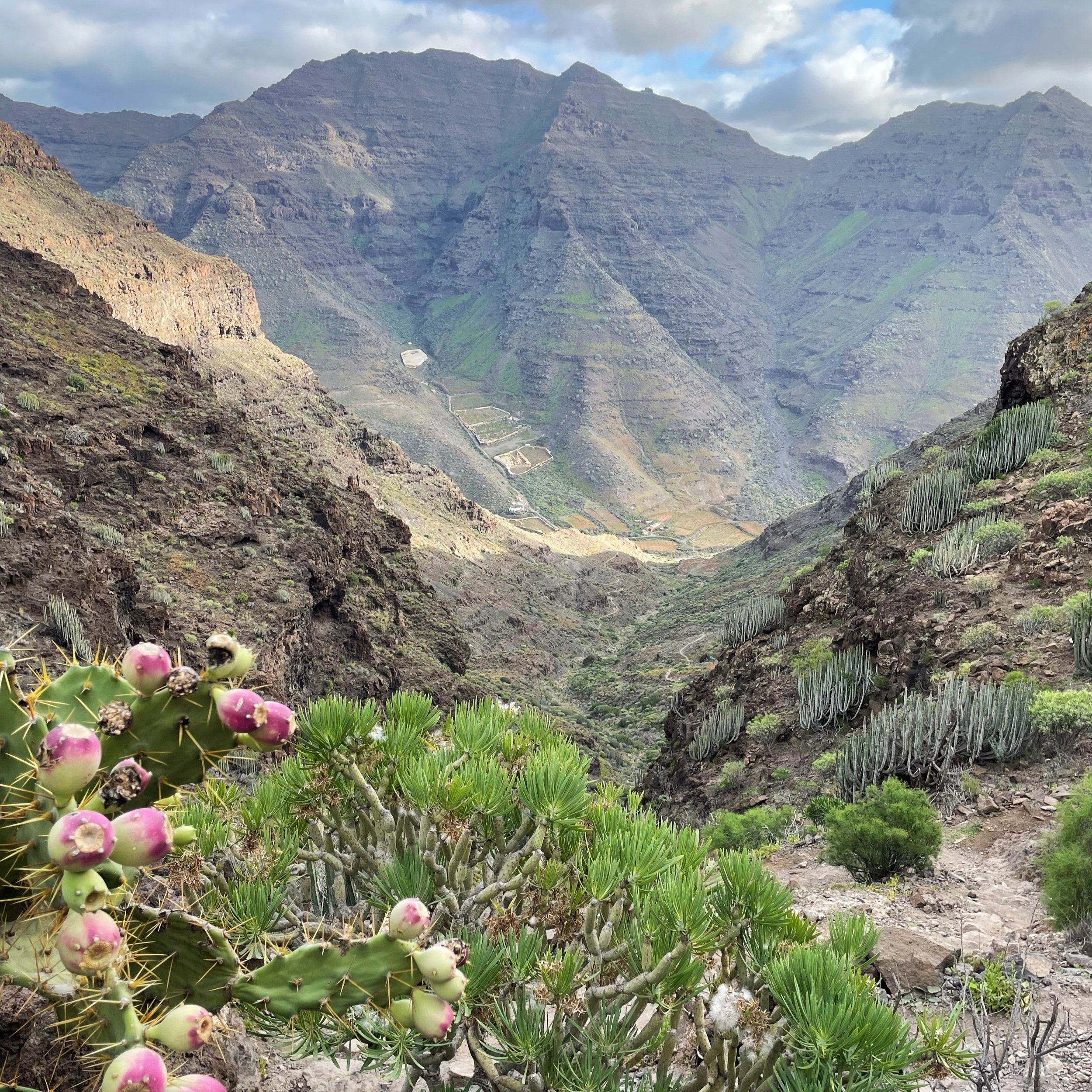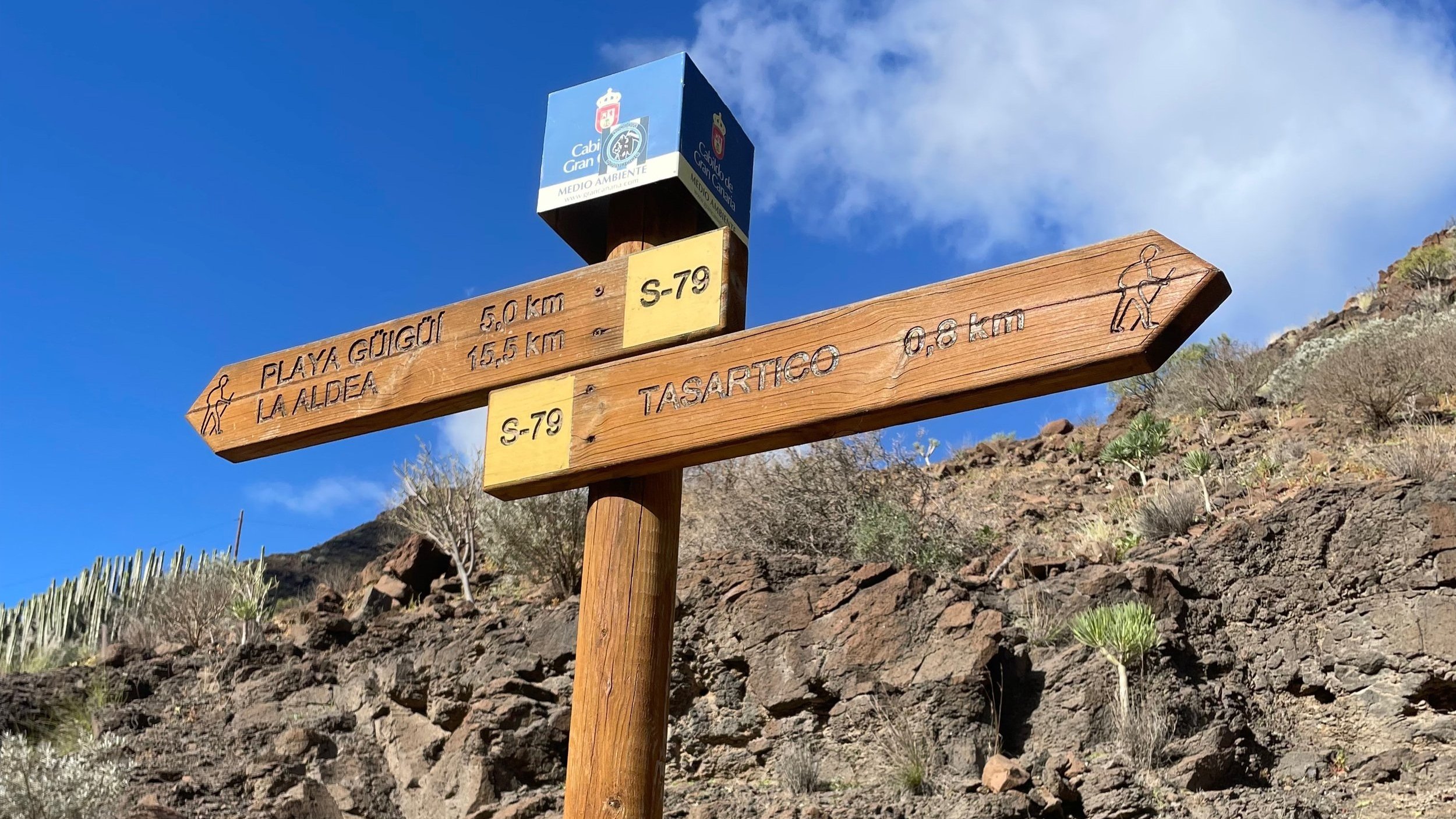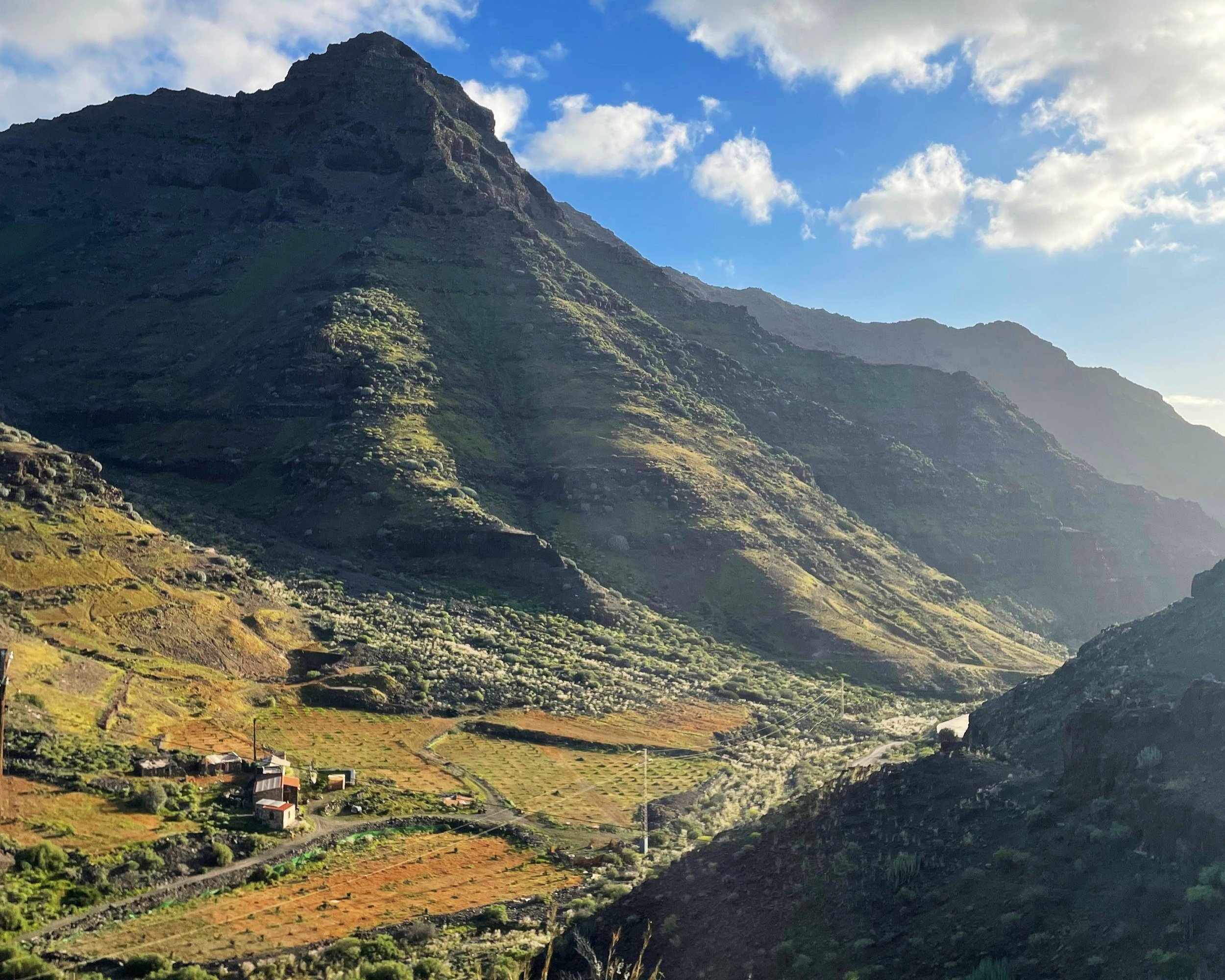How to get to the secret Güigüí beach, Gran Canaria
Güigüí Beach is located on the west coast of Gran Canaria, and is known for its secluded and natural beauty. To get there, you have to take a hiking trail that starts at the town of Tasartico, about an hour's drive from the main tourist areas in the south of the island. The hike to Playa Güigüí is known to be a challenge. But it's probably not as bad as you think...
The hike does involve walking over rocky and uneven terrain with steep inclines and declines. But for fit and experienced hikers the whole route is fun and beautiful.
The trail is approximately 6 km (3.7 miles) each way. It can take between 3-4 hours to complete depending on your fitness level and pace. And the reward at the end is definitely worth it.
Güigüí Beach is stunning, with clear turquoise waters and a picturesque black sand beach. It's surrounded by towering cliffs which makes it feel even more isolated from the outside world.
How long does the hike to Güigüí beach take?
On a warm November day, it took two of us (fit 30-somethings) 2 hours to get to Playa Güigüí. And 2 hours 15 to get back. In this blog, we’re focusing on the walk there. That’s because, once you’re at the beach you have no choice but to walk back.
Also, once you’ve completed the hike to Playa Güigüí, you’ll know what to expect on the way back. As it’s the same route in reverse. The way there is steeper. But the walk back has a longer up-hill stretch albeit at less of an incline.
Be sure to set off as early as you can. And be aware of the sunrise and sunset times during your visit. We set off at about 10:30am and stayed on the beach until about 3pm. In November, this gave us enough time to be back at the car well before sunset. You don't want to be stuck on those cliffs in the dark!
What is the first part of the hike to Güigüí beach like?
The first part of the hike to Güigüí Beach in Gran Canaria involves walking a well-marked path from Tasartico towards the coast. Ahead of you is winding upward trails that lead to a dip in the mountain. That's the pass you're working towards.
The trail to the peak of the pass is approximately 2km (1.2 miles) long and takes around 1-1.5 hours to complete, depending on your pace. During this part of the hike, you'll pass through vegetation and take in amazing views of the surrounding hills and mountains.
The path is easy to follow, starting with a gradual descent that gets steeper. As you near the crest of the pass, the path becomes rockier, and you'll need to start watching your step. Tripping or slipping on loose rocks and gravel is a hazard. At some points, the path can be quite narrow. So it's important to take your time and be cautious.
On the route to Playa Güigüí, the first half of the walk is probably the hardest. It involves more challenging terrain and steeper inclines and declines. But don’t let that put you off. Once you’ve crossed over the peak of the mountain, it’s all downhill (almost) to the beach.
What is the second half of the hike to Güigüí beach like?
Once you’ve crossed the rocky pass onto the far side of the mountain, the sea is in sight. But you technically have more than half way to go. The good news is, this ‘half’ is mostly downhill. And on the day we did the walk, it offered more shade and spots to rest than the way up.
The remaining trail is approximately 4km (2.5 miles) long. It takes around 1-1.5 hours to complete, depending on your fitness level and pace. The trail here becomes a little easier. But there are also several steep descents and ascents along the way.
In some parts of the trail, there are ropes and chains to help you navigate the more difficult sections. And as long as you’re sure on your feet, you won’t struggle for natural hand and footholds along the path.
The scenery on this side of the mountain is stunning. With rugged cliffs, deep gorges, and panoramic views of the Atlantic Ocean. As you near the beach, the the terrain becomes gradually less steep. Though there is one final descent onto the beach itself.
You'll be rewarded with breathtaking views of the beach and the crystal clear water. It makes the challenging hike to Playa Güigüí well worth it. In fact, it was one of our favourite beaches in the whole of Grand Canaria.
Can anyone do the hike to Güigüí beach?
The hike to Playa Güigüí in Gran Canaria is challenging and demanding, and it's not suitable for everyone. But it’s by far my favourite hike we did in Gran Canaria, and possibly one of my favourite hikes ever.
While there is no age limit or fitness requirement to attempt the hike, it does require a good level of physical fitness, balance, and endurance. The trail involves walking over rocky and uneven terrain, as well as steep inclines and declines. The ascent to the peak of the mountain is particularly challenging, and it's recommended to have some hiking experience before attempting it. Though it’s not scary, and there’s no need for any kind of training.
It's important to be prepared for the hike by wearing appropriate footwear, bringing plenty of water, snacks, sunscreen, and other necessary supplies. It's also important to take breaks and pace yourself, especially during the more difficult sections of the trail.
Is it easy to get to Playa Güigüí?
The trail to Güigüí can be difficult to follow in some places, so some people recommend going with a guide or at least with someone who has hiked to the beach before. But if you’re a fairly fit and experienced hiker, you’ll have no trouble making your way there.
The inclines are steep and at some points the sun is punishing. But the walk requires no technical climbing ability, beyond scrambling over boulders in a couple of places. It's important to note that there are no facilities or services at Güigüí Beach, so you need to bring your own food, water, and other supplies. Though there is a small hut that provides drinks close to the beach, this isn’t always open so you definitely shouldn’t rely on it.
What is Güigüí beach like
Güigüí Beach is a stunning, secluded beach located on the west coast of Gran Canaria. The beach is known for its natural beauty and pristine waters, as well as its rugged and remote location.
The beach is about 1 km long and is made up of black volcanic sand, which contrasts beautifully with the turquoise waters of the Atlantic Ocean. Because there are no facilities or services at Güigüí, the beach is relatively undeveloped and unspoiled, allowing visitors to experience its pure, natural beauty.
While the beach is secluded and remote, it's still popular among hikers and campers. Even in the off-season in November, we didn’t have the space to ourselves. But it's a great spot for swimming, sunbathing, and relaxing in the peaceful and natural surroundings.
What is camping at Güigüí beach like?
Camping at Güigüí Beach is a unique and memorable experience for those who are up for the adventure. As the beach is remote and undeveloped, camping is one of the few options available for those who want to spend more than a day at the beach.
There are no official campsites at Güigüí, so camping is done on the beach itself or on the surrounding cliffs. This means that you need to bring your own camping gear, food, water, and other supplies, as there are no facilities or services available.
While camping on the beach is allowed, it's important to respect the natural surroundings and leave no trace of your visit. This means packing out all trash and waste and being mindful of the impact that your presence may have on the environment.
We chose not to camp at as we didn’t have any camping equipment with us on our holiday, and were able to make the trip hike to Playa Güigüí and back in a day. But it's important to note that if you do camp at Güigüí you’ll need to carry all of your gear and supplies to the beach yourself. You should also be aware of the tides, and prepared for any changes in the weather conditions.
Read more about our favourite hikes in Gran Canaria here.





